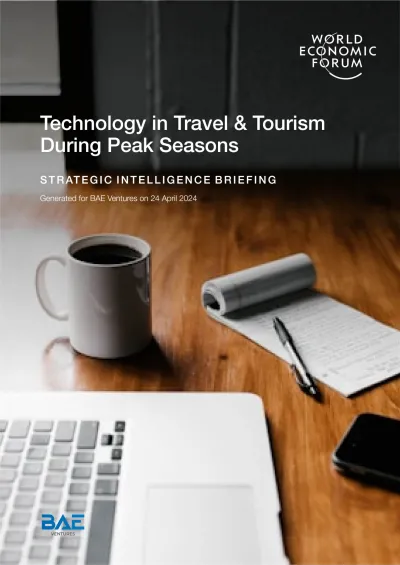Technology
Customer experience
Augmented Reality (AR)
Virtual Reality (VR)
Was all about Costs… Now all about Personalisation? How the Airline Industry Lost its Way, but is Now Fighting Back…

Technology
Customer experience
Augmented Reality (AR)
Virtual Reality (VR)
Pre-Covid, ask any airline what was key in their strategic vision and, they would have all said, ‘managing costs’. It seems times have changed. Now, as the same question of airline executives and you get, ‘all about personalisation’. What happened?
It is clear, the industry has become very much commoditized, or, as marketers might say, the industry suffers from parity – no real differences. Well of course, if you spent most of the time between 2015 and 2019, reducing costs, by default, you are taking out the difference.
Moving forward, the pandemic made people stop and think, and, certainly for airlines, what it taught was that we need to engage again with the passenger. We all remember the stories of contact centres not responding to clients, and the farcical situation with voucher redemption.
However, moving aside from aviation for the moment, in today’s fast-paced digital world, as customer expectations keep evolving, businesses are striving to stand out by providing exceptional experiences. Change is not just a constant – it is a driving force that shapes strategies, decisions, and outcomes. The essence of any business lies in its connection with customers, and as the business world undergoes constant evolution, so must customer service. Well, that is something you may expect retailers to say, but that has not really been the speech of an airline!
The intersection of technology and consumer demands has given rise to an era where one-size-fits-all solutions are no longer the gold standard. Instead, we are seeing a seismic shift towards personalized services and seamless solutions that not only meet but anticipate the unique needs and desires of each individual customer. In light of the above, the purpose of this commentary is therefore to explore how airlines can leverage innovative technologies, data insights, and a commitment to personalization to redefine customer interactions, drive engagement and satisfaction, and create a transformative user experience. Sounds a lot, but we had such back in the 80’s with the British Airways, Putting People First and a Day in the Life Programmes, where it was all about making the airline the best in class. And Singapore Airlines also took service excellence to another level. Cases, unfortunately, now in Harvard, used to show what we used to do as an industry…
Why Customer Experience… Now?
In various industries across the world, disruptors like Uber, Airbnb and Apple Pay have redefined seamless experiences, creating a standard for delivering unexpected and enjoyable moments for their users. This has raised the bar for all businesses, as consumers now anticipate exceptional interactions with every brand. Striving to meet these elevated expectations, companies have embarked on digitizing their processes, culture, and operations, with outcomes varying in degrees of success. The aim is to establish a unique aspect of their brand that can confer a lasting competitive edge.
However, great experiences are not just about digitalization, but personalization. And, as we used to say, be careful not to lose touch with too much technology. And without a clear understanding and business focus on the customer, business plans geared toward achieving those desired interactions will be fragmented, uncertain, and ineffective. Therefore, a successful business strategy shouldn’t solely hinge on digital transformation – instead, it should centre around transforming the customer experience. Again, is that not what Putting People First was about…
“Putting People First” was a training programme designed by the Danish Firm TMI – Time Manager International for over 20,000 front-line BA employees in the early 1980s. The aim of the two-day training course was to motivate staff “to enjoy giving good customer service to the airline’s customers, dealing with stress and difficulties, and how to make the most effective contact with people”. It also had the aim of “enabling different groups of employees to appreciate and understand their interdependence upon one another for a congenial ‘people orientated environment’ which in turn forms the basis for focusing the airline’s attention on the customer and meeting his or her needs.”
Role on 2024, is that not a bad thing for airlines to be doing today, rather than just focusing on how we take out costs, to make us the same as all of other airline companies!
In review, customer experience is defined as a customer’s perceptions and feelings about their interactions with a company. It is about providing a seamless, positive, and personalized journey that meets (and preferably exceeds) every customer’s expectation. That was the theory. But in reality, it is commonplace that the most compelling digital experiences should start with a compelling understanding of the customer — who they are, what they want, what job they have to do, and even how they feel about themselves. Unfortunately, many organizations have it backward – they start with the technology and then go back into customer understanding. Their unending quest for operational efficiency is prioritizing automation over customer empathy – and that is a problem. Particularly if you agree with Salesforce, that say “80% of consumers believe that the experience a company provides is just as important as its products or services”.
Revolutionizing your Customer Experience
So, what can airlines do, or, in some cases, re-do again to revolutionize their customer experience offerings seriously.
- Understanding the customer journey: Personalization begins by truly grasping the customer journey. By collecting and analysing data at various touchpoints, carriers can identify patterns, preferences, and pain points. This enables them to create personalized experiences that resonate with passengers at every stage of their journey, from discovery to post-arrival support.
- Leveraging Customer Data: The availability of data provides airlines with valuable insights to fuel personalization efforts. By leveraging data analytics and artificial intelligence, carriers can uncover patterns, preferences, and trends that help them anticipate customer needs and deliver personalized experiences proactively.
This data-driven approach enhances customer satisfaction and loyalty. On-board and airport experiences will never be better!!
- Social Listening and Engagement: In today’s digitally driven era, passengers often share their thoughts and experiences on social media platforms. These comments, reviews, and posts have a big influence on how a brand is perceived. With technology, airlines can keep an eye on these conversations and interact with customers in real time.
- Augmented Reality (AR) and Virtual Reality (VR): The rise of AR and VR technologies has brought about exciting advancements in improving customer interactions. Retailers, for instance, now offer virtual try-on experiences, empowering customers to visualize products in their own environment prior to purchase. How can airlines use such to take you through the flight.
- Cultivate a Customer-Centric Culture: Finally, it is imperative for airlines to foster a company culture that prioritizes customer satisfaction and empowers employees to go above and beyond to meet customer needs. This requires businesses to prioritize customer needs and empower employees to make decisions that benefit the traveller. But, as we have focused so much on cost-cutting, who was empowered to spend anything?
Conclusion
For airlines, creating compelling customer experiences, whether physical, digital, or a combination of both, hinges on a deep understanding of their travel needs. This understanding empowers us to forge meaningful connections with them, even with seemingly minor interactions. We must be willing to question our assumptions about what customers truly desire in an experience. Ad, by demonstrating our ability to support them effectively and instil confidence during key moments in their journey, we can cultivate loyalty and satisfaction that transcends mere transactions. Thus, we can make more per journey, greater than, the costs were saving when just looking at cost reductions.



